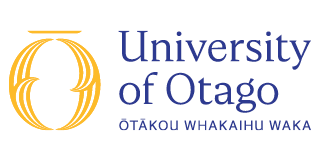Kia Mau Te Titi Mo Ake Tonu Atu: Harvests of Titi by Rakiura Maori
Principal investigator:Professor Henrik Moller
Subcontractors: Proteus Consulting (David Fletcher), Ecosystems Consultants (Henrik Moller)
Staff involved: Henrik Moller, Jamie Newman, Corey Bragg, Sam Mckecknie, Darren Scott
Brief abstract
The primary scientific goal of this fifteen year partnership between Rakiura Maori and University of Otago ecologists and mathematicians was to ensure that the tītī (chicks of sooty shearwaters, Puffinus griseus) will remain plentiful enough for the mokopuna (grandchildren) to continue birding. Social aims were to Honour the Treaty of Waitangi in the way the research project was defined, executed and reported, and to use the Kia Mau Te Tītī Mo Ake Tonu Atu case study to advise other iwi groups and scientists on how to better achieve cross-cultural research co-management. A key aim was for Mātauranga Maori and science to peer review and support each other to capture 'the best of both worlds' and different ways of knowing.
We combined mark and recapture models, measures of harvest intensity, population monitoring using ecological surveys, and data from eight detailed muttonbirder 'hunting diaries' (up to 2002) in a Bayesian modelling approach. Detailed ecological surveys of breeding population density, vegetation and soils on 22 'manu' (whanau birding territories) spread across 12 of the 35 tītī islands were complemented by satellite and geolocator tracking studies and statistical model building to link bird behaviour and condition to climate fluctuations and identify global threats to bird abundance.
Mātauranga Maori was explored by qualitative interviews with 22 elders and 72 closed questionnaires with experienced birders throughout the research project to (a) record the knowledge (5 elders have since died), (b) characterise the general nature of mātauranga and kaitiakitanga, (c) compare their power to guide sustainable resource management and conservation with knowledge provided by science, and discover (d) how our research partnership could have been improved.
Community-level participation and direction was facilitated by:
- presentations at two regular tītī hui each year, and two special research hui;
- creation of a website;
- production of over 35 confidential reports to individual whanau concerning results on their own birding ground or pertaining to their own birding diaries; and
- twice-yearly editions of Tītī Times, a popular-styled magazine that incorporated science with history and testimony of the birders, opinion and educational snip bits. This is mailed out to around 1400 whanau, researchers, government agencies and national policy makers that engage in cross-cultural environmental management and research.
Above we report $1,459,000 income for the CSAFE review period only (2004-). This was all administered by Zoology in Henrik Moller's transition period to CSAFE but has been included here to show the trajectory of the team's research activity.
Funding
The Kia Mau te Tītī Mo Ake Tonu Atu research project was supported by a donation each year by NZ Aluminium Smelters Ltd. ($1,000 p.a.) throughout the review period (and since its inception in 1994). For the last two years of field work (2005 and 2006) the research team was flown free of charge by Southwest Helicopters Ltd. to an estimated value of $5,000. This was part of their wish to support the Rakiura Maori community and sustainability of their birding and culture.
The funding in later years from NZAS was particularly important in paying page charges for a special 'Mātauranga Maori, Science and Seabirds' special edition of New Zealand Journal of Zoology (September 2009) that included 10 research papers from the Kia Mau te Tītī Mo Ake Tonu Atu research project.
The Bridge of Employment scheme, through the Ministry of Science & Innovation (MSI) enabled us to appoint Dr. Grant Blackwell as a Postdoctoral Fellow to be employed 50% FTE on the Kia Mau te Tītī mo Ake Tonu Atu and 50% for the ARGOS Environment research team.
Funder: Ministry of Science & Innovation (MSI)
Total contract value: $1,459,000
Start date: January 2004-July 2007
